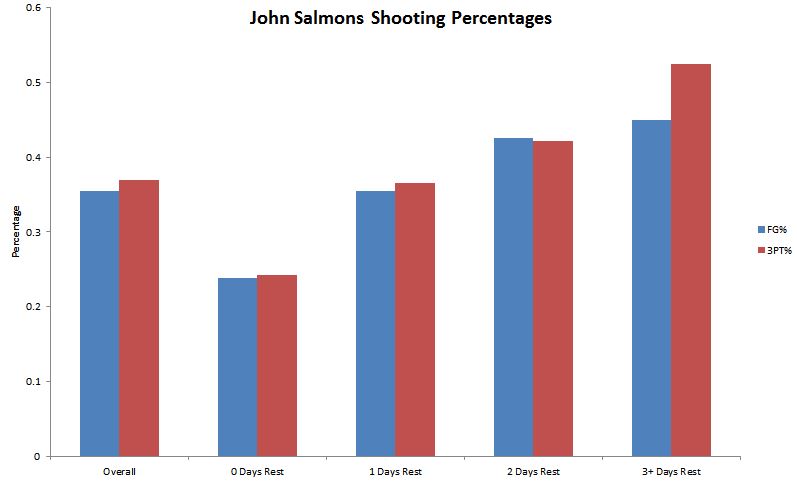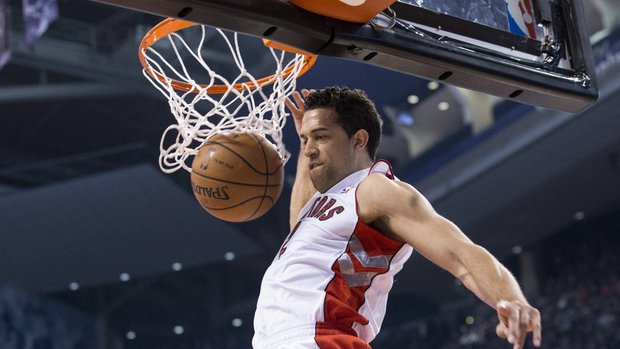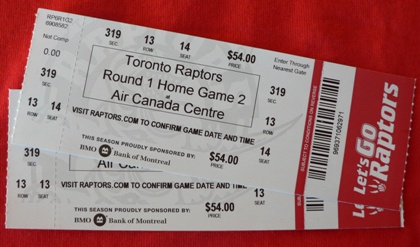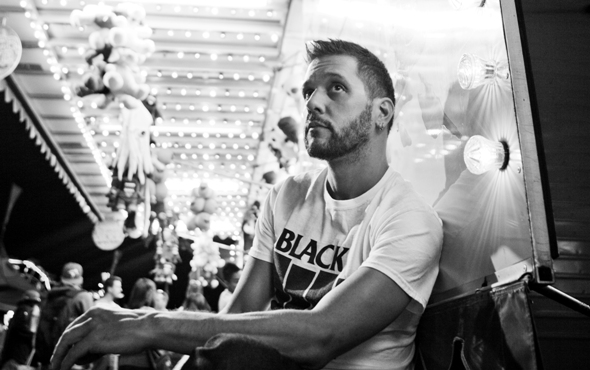Taking an objective look at John Salmons, and assessing his role on this team.
The game against the Oklahoma City Thunder was the tipping point.
Before that game, to most fans, John Salmons was just another husky veteran that stood as an impediment to the prospects before him. When he took to the court, a collective groan was audible throughout the arena. As he left, no cheers of appreciation were heard.
But Kevin Durant changed the whole dynamic with one fell swoop.
The fan base has completely turned against Salmons since the Raptors’ improbable overtime loss to the Thunder. Suddenly, our expressed annoyance with his play turned into scathing critiques of his character. On the night of the game, the top 7 comments in the quick reaction, as ranked by upvotes, were all directed towards Salmons. Commentor lon66 summed up our sentiments rather aptly:
I had salmon in my fridge. I threw it out.
Adhering to no boundaries, the burning hatred for Salmons even torched the reputation of head coach Dwane Casey, who’s lineups and rotations have come under constant questioning, mostly on behalf of — you guessed it — Salmons. The only person to have benefited from the entire ordeal is Landry Fields, who fans suddenly bumped up from perennial pariah to unsung hero. The fact of life stands — fans will forever be fickle.
As fans, there is an uncontrollable urge to be reactionary, and hive-minded, but the collective hatred surrounding Salmons has lionized a legitimate debate that needs to be had — what role should Salmons play on this team?
First off, let’s throw out John Salmons’ boxscore numbers. In 21.8 minutes per game, Salmons is averaging 4.8 points, 2.0 rebounds and 1.7 assists on 35.8% shooting from the field. If your gag reflex was activated upon glazing over his shooting percentage, don’t worry, the response was normal and warranted. Amongst all guards who have played more than 600 minutes this season, Salmons ranks second last in FG%. Therefore, it comes as no surprise that the Raptors offensive efficiency drops from 109.7 without Salmons, to 105.6 with Salmons, a difference of -4.1 points. In layman’s terms, that’s the difference between the Heat’s offense (109.5), and the Wolves’ offense (105.7).
Salmons’ aggregate numbers are a little deceiving, as his production seems to vary significantly with rest. In 8 games played with 3+ days of rest, Salmons is shooting 45.0% on 7.5 field goal attempts per game, including a sterling 52.4% from deep. Compare that to the 17 games he’s played on the second night of back-to-backs, where Salmons’ field-goal percentage dips to 23.8% overall, and 24.2% from deep.
The effects of rest is also evident by the eye-test. At the tender age of 34, it’s Salmons’ legs are starting to fail him, which is having an obvious effect on his jumpshot. Without rest, Salmons gets very little lift on his jumpshot, especially when on pick-and-roll plays, where he likes to curl off a screen, step into the mid-range area, and shoot an elbow jumper.
On the whole, Salmons’ offensive contributions are best evaluated through the lens of skills, rather than production. By in large, Salmons is capable of doing three things on offense. First, he’s able to function reasonably as a pick-and-roll ball-handler. As detailed above, his favorite move is to curl around a screen, and shoot the mid-range jumper, and the success of said jumper is dependent on rest. Second, Salmons is a capable ball-handler, and plays a secondary distributor role in the second unit to compliment Greivis Vasquez. Third, Salmons can knock down open three-pointers.
The same skill-evaluation approach can be applied to measure his defensive contributions, from which Salmons’ derives the bulk of his value. Salmons is a smart defender who understands his place in defensive schemes, and is able to use his wit to overcome his physical limitations. Standing at 6’6, 216 lbs, Salmons is big enough to guard bulkier wings, and is tall enough to risk going under screens on smaller, quicker players.
He’s nobody’s Andre Igoudala on defense, but he does a reasonable job containing opposing wing players. According to Synergy Stats, Salmons has faced 100 pick-and-roll situations this year wherein the ball-handler has elected to shoot, and has conceded a mere 0.58 points per play which ranks 8th in the NBA this season. Granted, the sample size is quite limited, but Salmons has a history of being a smart pick-and-roll defender, ranking 18th, and 85th in points allowed per play in previous seasons. On aggregate, Salmons’ net effect on the Raptors’ defensive rating is +3.0.
Just as a refresher, Salmons is a negative on offense, and a positive on defense. He is able to shoot from deep, run a pick-and-roll and reasonably handle the ball, but his performance is significantly impacted by rest. Defensively, Salmons understand defensive positioning and has done a good job shutting down the pick-and-roll.
Currently, Salmons employs the unenviable role as the first wing off the bench. Typically, he subs in for DeRozan midway through the first quarter. He often shares the court as the secondary playmaker in the second unit. By minutes played, Salmons has logged nearly 57 minutes alongside DeRozan, Hansbrough, Patterson and Vasquez, which qualifies as his second-most utilized Raptors lineup this season.
Although he’s softened on his insistence of late, Dwane Casey also likes to play Salmons to close out games, which has sparked the majority of the ire surrounding his lineup construction. Salmons has shared the floor with DeRozan, Johnson, Lowry and Valanciunas for a whooping 98 minutes this season. That lineup has been largely ineffective, clocking in at -5.6 points per 100 possessions.
But the more pertinent question isn’t that of Salmons’ abilities — of which we know to be limited — but rather, who would fare better in his stead?
Between small-forward and shooting guard, the Raptors have a vacancy of 96 minutes to fill. DeRozan and Ross are already working overtime, clocking in at 38.4 and 26.3 minutes respectively, although it could be argued that Ross’ minutes could stand to be increased. Regardless, even if Ross played 30 minutes per game, the Raptors would still need to fill 28 minutes along the perimeter.
Unfortunately, the Raptors realistically have nothing but cannon fodder to fill the void. Aside from Salmons, the options at small forward are Steve Novak, Landry Fields and Nando de Colo.
Dwane Casey only plays Novak at the four to open up spacing on the inside. In 507 minutes played this season, Novak has only logged 10 minutes at SF. While Novak could certainly stand to play more on the perimeter, the fact of the matter is that the Raptors face significant issues with spacing when they play two legitimate bigs (outside of Patterson), and the breathing room Novak provides is more valuable than any minutes he could mop up on the wing. Also, Novak is only an upgrade in one area (floor spacing), and would struggle to replicate the role Salmons plays.
Nando de Colo provides an interesting alternative to Salmons with his combination of ball-handling and shooting. At the age of 26, de Colo is younger and more mobile, but he also makes extremely questionable decisions on offense, as evidenced by his whopping 24.4 turnover percentage. In other terms, he turns it over once in every four possessions. There is a reason why people call him Nando de YOLO.
The most intriguing replacement for Salmons is Landry Fields, who is able to replicate every one of Salmons’ skills aside from perimeter shooting. Fields has decent size, quickness and awareness on defense, and he’s also able to handle the ball. He can’t shoot from outside the paint, which is a big issue as a wing player, but he’s able to make up for it by being a smart cutter. As a result, his true-shooting percentage this season is within 0.6 percentage points of Salmons’.
Ultimately, this exercise is moot, as there is no magic bullet solution. Every candidate has their fair share of warts, and Salmons might actually be the least homely of the bunch. One way or another, Dwane Casey needs to plug up roughly 30 minutes a night with little more than sop. Casey could platoon Fields and Salmons on back-to-backs in order to maximize Salmons’ effectiveness, but our longing for Fields is a product of absence, rather than merit.
So in short, Salmons isn’t as bad as we think he is, but he’s still pretty bad, only his replacements are equally as inept. We’re basically stuck between a rock and a hard place for the time being, so it’s best if we just get comfortable. Also I’m not good at writing conclusions.
Statistical support from NBA stats, ESPN and Basketball Reference






